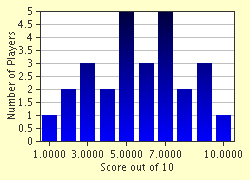Quiz Answer Key and Fun Facts
1. The Royal Hospital Chelsea was founded toward the end of the seventeenth century by which British monarch?
2. Residency in the Royal Hospital Chelsea is open to former members of all branches of the British military.
3. The Royal Hospital Chelsea was designed and built by which great British architect, renowned for his work on many public buildings after the Great Fire of London? Give his surname ONLY.
4. Space for retired veterans at the Royal Hospital Chelsea is limited; approximately how many modern 'spartans' are resident at the hospital at any one time?
5. The design of the Royal Hospital Chelsea is said to be have been inspired by which famous Parisian landmark, also constructed to serve a similar purpose by French king Louis XIV?
6. The minimum acceptable age for entry as a resident to the Royal Hospital Chelsea is seventy-five years.
7. Sir John Soane constructed an infirmary for the residents at the Royal Hospital Chelsea in 1809. Which attraction is now located at the site of this original infirmary?
8. In 1945 the Royal Hospital Chelsea was partially destroyed after being hit by which type of weapon?
9. Many of us are familiar with the pensioners appearing in public dressed resplendently in their scarlet tunics. It is mandatory that this uniform is worn at all times.
10. You observe a group of pensioners on parade wearing black tricorne hats. What fact can you determine from this with certainty?
Source: Author
SisterSeagull
This quiz was reviewed by FunTrivia editor
stedman before going online.
Any errors found in FunTrivia content are routinely corrected through our feedback system.

